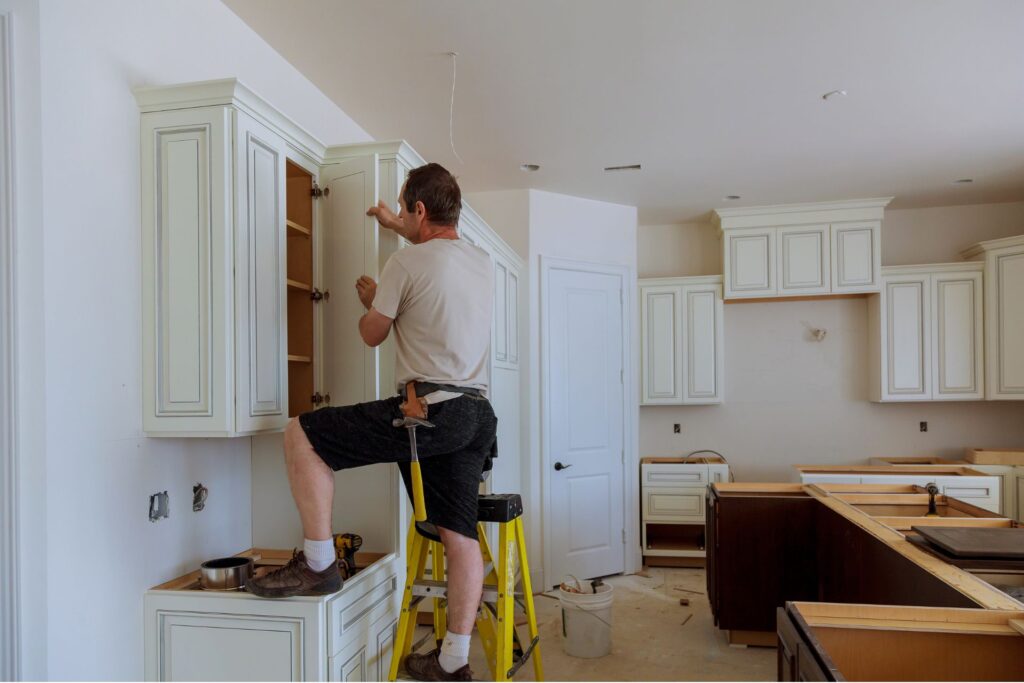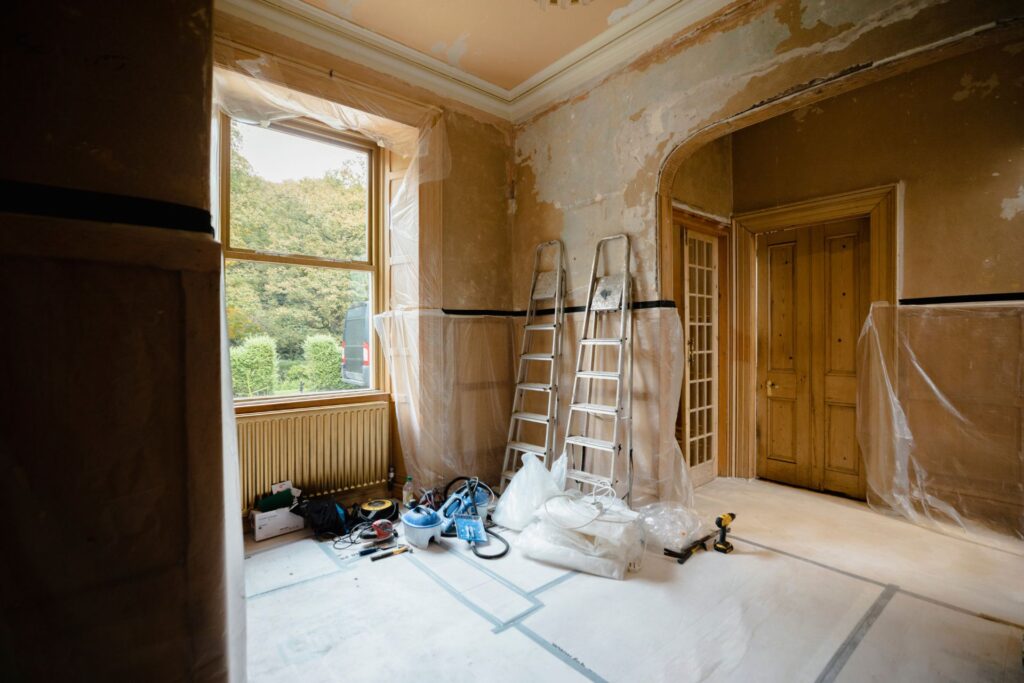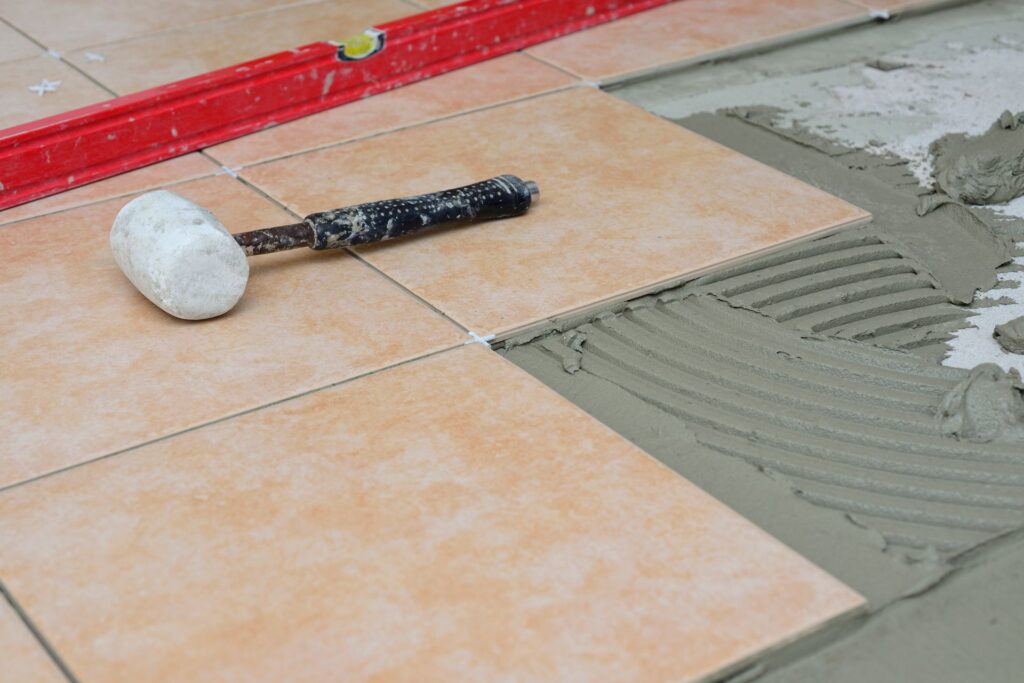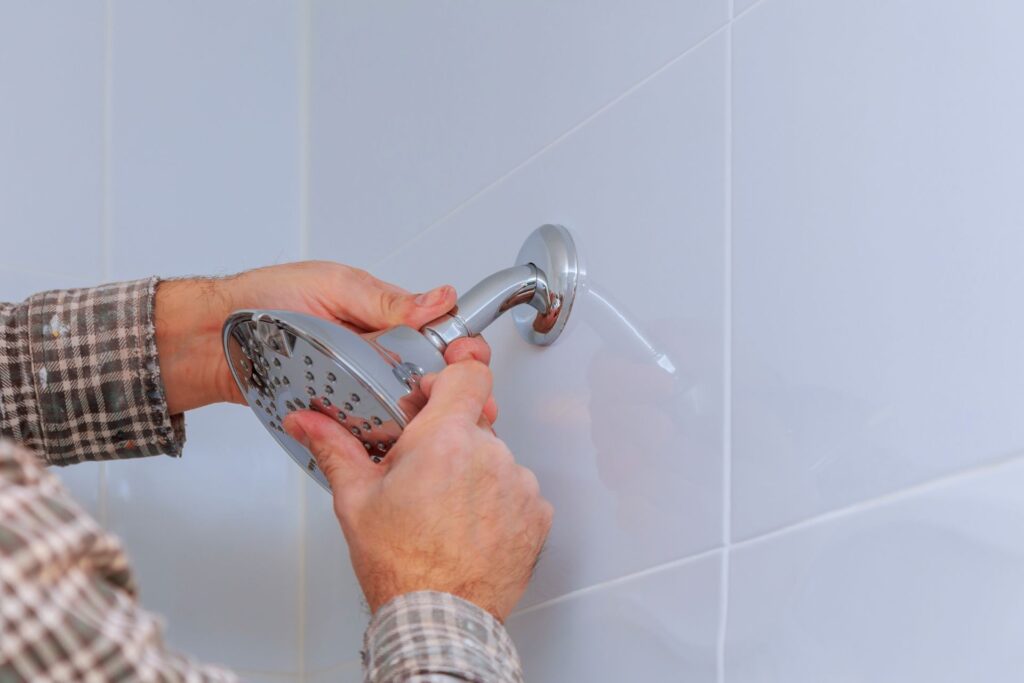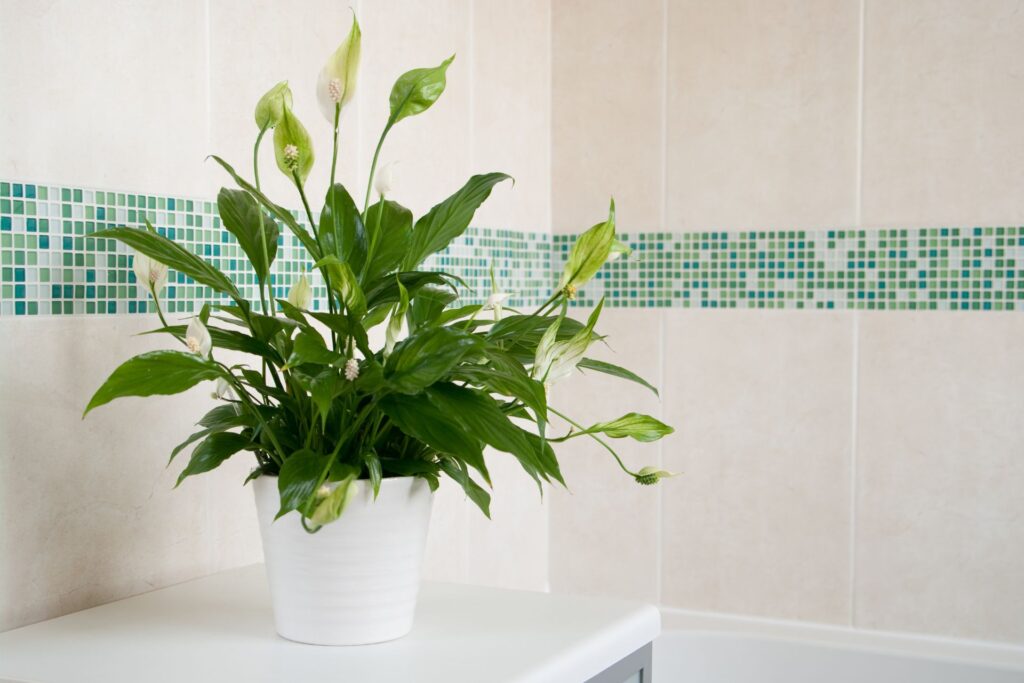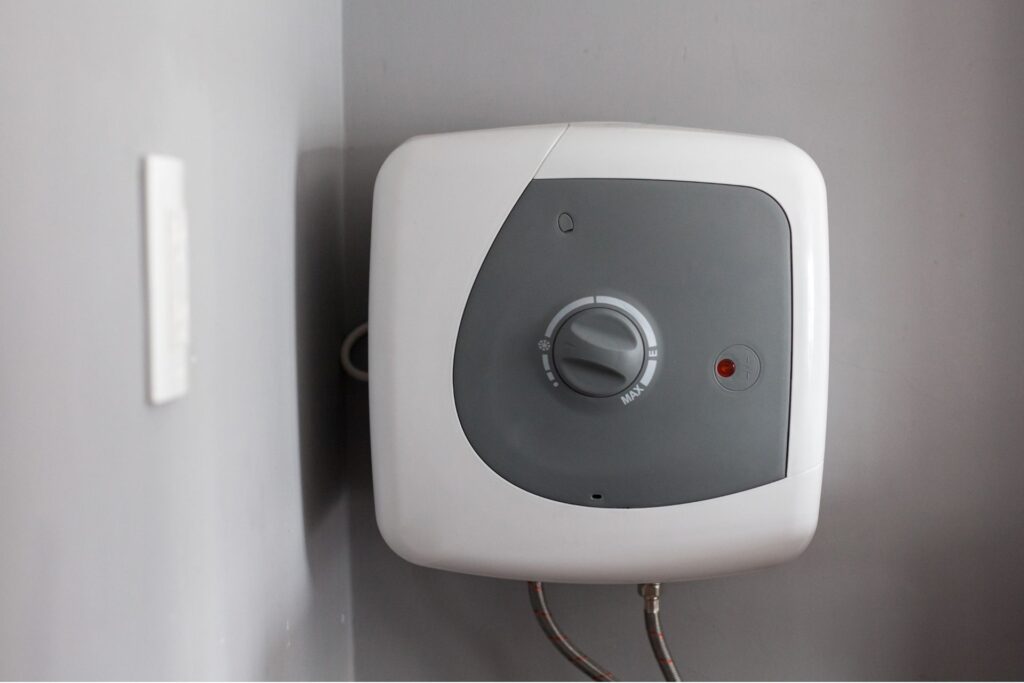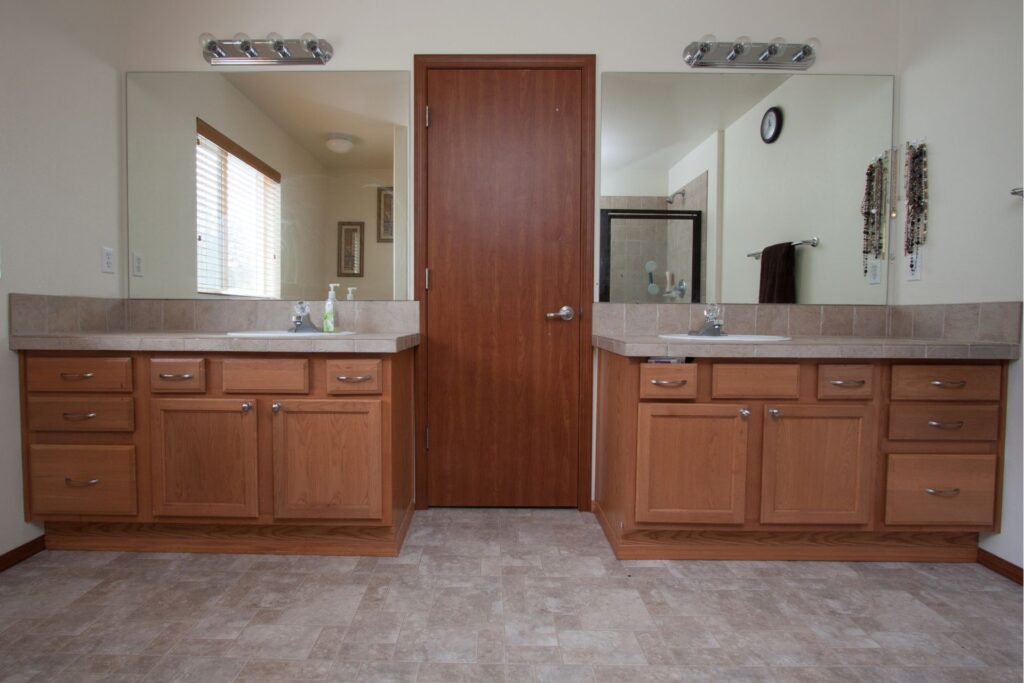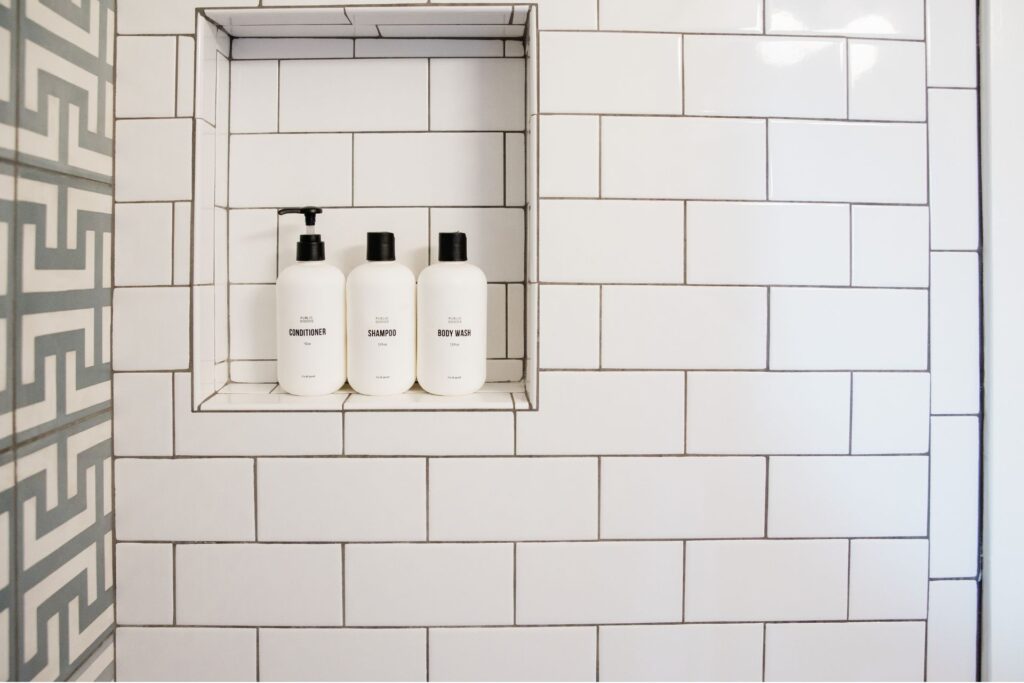Welcome to our comprehensive guide on the average cost of installing a bathroom vanity! Upgrading your bathroom vanity can be a fantastic way to enhance both the look and functionality of your space, but it’s essential to understand the costs involved before diving into a renovation project. In this article, we’ll explore the various factors that influence the overall expense—from the type and quality of the vanity to labor and additional features—helping you budget effectively and make informed decisions. Whether you’re considering a simple upgrade or a complete bathroom overhaul, this guide will provide the insights you need to plan your project with confidence and avoid any unexpected costs.
On average, the cost to install a bathroom vanity ranges from $300 to $3,800, depending on factors such as the type of vanity, material quality, size, and additional plumbing or electrical work required.
- What Is A Bathroom Vanity?
- Factors That Affect The Cost Of Installing A Bathroom Vanity
- Breakdown Of Average Costs To Install A Bathroom Vanity
- DIY Vs. Hiring A Professional: Pros And Cons
- How To Save Money On Bathroom Vanity Installation
- FAQs: About Average Cost To Install A Bathroom Vanity
- How much does it cost to install a bathroom vanity?
- What are the different types of bathroom vanities, and how do they affect the cost?
- What is the difference in cost between a pre-fabricated vanity and a custom vanity?
- How does the choice of material impact the installation cost?
- Can I install a bathroom vanity myself, or should I hire a professional?
- What additional costs should I consider when installing a bathroom vanity?
- How long does it take to install a bathroom vanity?
- Will I need to modify existing plumbing or electrical work to install a new vanity?
- Are there any hidden costs associated with installing a bathroom vanity?
- How can I save money on bathroom vanity installation?
- Conclusion
What Is A Bathroom Vanity?
When it comes to designing or renovating a bathroom, one of the most critical components to consider is the bathroom vanity. But what exactly is a bathroom vanity, and why is it so crucial to the overall design and functionality of a bathroom? Let’s dive into this essential piece of bathroom furniture to better understand its definition, types, and reasons why choosing the right vanity is paramount.
Definition and Purpose of a Bathroom Vanity
A bathroom vanity is a piece of furniture that typically combines a sink, countertop, and storage space. It is more than just a place to wash your hands or brush your teeth; a vanity serves as the focal point of the bathroom, playing both a practical and aesthetic role. The vanity often holds a mirror, and it usually provides storage space for toiletries, towels, and other bathroom essentials. The combination of these elements makes the vanity an integral part of any bathroom, contributing to the room’s overall look and functionality.
The primary purpose of a bathroom vanity is twofold: functionality and style. Functionally, a vanity provides a stable surface for your sink and a countertop for various bathroom tasks, such as grooming or makeup application. It also offers valuable storage solutions, helping to keep the bathroom organized and clutter-free. From a style perspective, the vanity can set the tone for the entire bathroom. Whether your preference leans toward a modern, minimalist design or a more classic, traditional look, the vanity can be chosen to complement and enhance the room’s aesthetic.
Different Types of Vanities
Bathroom vanities come in various types, each offering unique benefits and catering to different tastes and bathroom sizes. Understanding the different types of vanities available can help you make an informed decision that best suits your needs and preferences. Here are some of the most popular types:
1. Single Vanities: As the name suggests, single vanities have one sink and are typically designed for smaller bathrooms or powder rooms. They are perfect for maximizing space while still providing essential functions. A single vanity often includes drawers and cabinets that offer ample storage, making it an excellent choice for bathrooms where space is at a premium.
2. Double Vanities: Ideal for shared bathrooms, double vanities feature two sinks and are perfect for master bathrooms or bathrooms that multiple people use regularly. They provide additional countertop space and storage, allowing for a more organized and spacious bathroom. Double vanities are a great choice for families or couples who want to streamline their morning routines.
3. Floating Vanities: Floating or wall-mounted vanities are attached directly to the wall, giving the illusion that they are “floating” above the floor. This design creates a modern, minimalist look and is excellent for small bathrooms as it can make the space appear larger. Floating vanities offer a sleek, contemporary aesthetic and are perfect for those looking to save floor space and create a clean, open feel in their bathroom.
4. Freestanding Vanities: These vanities are not attached to the wall and stand directly on the floor. Freestanding vanities come in various styles, from antique-inspired designs to modern and sleek models. They are versatile and can be placed anywhere in the bathroom, making them a flexible choice for many homeowners. This type of vanity often mimics the appearance of traditional furniture, adding a touch of elegance and sophistication to the bathroom.
5. Corner Vanities: Specifically designed for small bathrooms or spaces where every inch counts, corner vanities fit snugly into a corner of the room. They are compact and provide the essential functions of a vanity without taking up much space. Corner vanities are a smart choice for those looking to optimize a small bathroom layout.
6. Vessel Sink Vanities: These vanities feature a sink that sits on top of the counter, resembling a bowl or vessel. Vessel sink vanities are popular for their unique and artistic appearance, often becoming a statement piece in the bathroom. They can add a touch of luxury and style, but it’s essential to ensure that the overall height is comfortable for everyday use.
Why Choosing the Right Vanity is Important for Both Style and Function
Choosing the right bathroom vanity is crucial because it affects both the bathroom’s functionality and aesthetic appeal. A well-chosen vanity can enhance the bathroom’s overall design, making it more inviting and cohesive. It can also improve the room’s functionality by providing adequate storage and workspace, contributing to a more organized and efficient daily routine.
From a style perspective, the vanity is often the centerpiece of the bathroom. It can set the tone for the entire room, reflecting the homeowner’s taste and personality. A sleek, modern vanity can create a contemporary feel, while a more traditional design can add a sense of warmth and elegance. The material and finish of the vanity also play a significant role in defining the bathroom’s overall aesthetic. For example, a wooden vanity with a natural finish can bring a rustic, earthy vibe, while a glossy, lacquered vanity might be perfect for a more chic, urban look.
Functionally, the right vanity ensures that the bathroom meets the needs of its users. A vanity with ample storage can help keep the bathroom tidy by providing a place for everything from towels to toiletries. The size and configuration of the vanity are also important considerations, especially in smaller bathrooms where space is limited. A well-proportioned vanity can make a small bathroom feel more spacious, while a poorly chosen one can make the room feel cramped and cluttered.
Moreover, the vanity needs to be durable and resistant to the humid environment of a bathroom. Materials like solid wood, engineered wood, or metal should be chosen for their durability and ability to withstand moisture. The countertop material is equally important, as it needs to be both attractive and capable of resisting water, soap, and other bathroom products. Options like quartz, granite, or solid surface materials are popular choices for their durability and easy maintenance.
In conclusion, a bathroom vanity is much more than a mere piece of furniture. It is a vital element that combines function with style, serving as a key component in creating a beautiful and practical bathroom space. Whether you’re looking to update your bathroom with a new vanity or planning a complete renovation, understanding the different types of vanities and the importance of choosing the right one can help you create a bathroom that is both functional and aesthetically pleasing.

Factors That Affect The Cost Of Installing A Bathroom Vanity
When planning to install a new bathroom vanity, several factors can significantly impact the overall cost. From the type and quality of materials used to the additional features you might want, understanding these factors can help you budget more effectively. In this guide, we’ll break down the key elements that influence the cost of installing a bathroom vanity to help you make an informed decision.
Type of Vanity
The type of vanity you choose plays a major role in determining the installation cost. There are several types to consider:
- Single vs. Double Vanities: A single vanity is typically less expensive than a double vanity, primarily due to its smaller size and the fact that it requires less material and labor to install. Double vanities, which offer two sinks, are ideal for larger bathrooms and for homes where multiple people need access to a sink simultaneously. However, they require more space and often involve additional plumbing work, which can increase both material and labor costs.
- Custom vs. Pre-Fabricated Vanities: Pre-fabricated vanities are generally more cost-effective and quicker to install. They come in standard sizes and styles, which makes them a convenient option for homeowners looking for a quick update. On the other hand, custom vanities are tailored to fit your specific bathroom layout and design preferences. While custom options provide more flexibility in terms of size, material, and style, they are usually more expensive due to the specialized labor required for their construction and installation.
Material Quality
The materials used in your bathroom vanity significantly affect both the upfront and long-term costs. Here’s a closer look at how different materials can impact pricing:
- Wood: Solid wood vanities are known for their durability and timeless appeal. They can withstand moisture better than some other materials if properly sealed and maintained. However, wood is often the most expensive option due to its high-quality look and feel.
- MDF (Medium-Density Fiberboard): MDF is a more affordable alternative to solid wood. It’s made from compressed wood fibers and resin, providing a smooth, even surface that can be easily painted or laminated. While MDF is budget-friendly and versatile, it may not be as durable as solid wood, especially in high-moisture environments.
- Laminate: Laminate vanities are among the most affordable options. They are made by bonding a thin layer of decorative material over a core of particleboard or MDF. Laminate is easy to clean and comes in a variety of colors and patterns, but it may not be as durable as wood or stone.
- Stone (Granite, Marble, Quartz): Stone vanities, such as those made from granite, marble, or quartz, are often more expensive due to their luxurious appearance and durability. They are resistant to scratches and moisture, making them ideal for high-traffic bathrooms. However, the cost of stone can vary widely depending on the type and quality of the stone selected.
Size of the Vanity
The size of your vanity directly impacts both the cost of the vanity itself and the installation cost. Larger vanities require more materials, and the installation process may be more labor-intensive. For instance, installing a large, heavy double vanity may require additional support structures and more extensive plumbing work. Moreover, if your bathroom space is limited, installing a larger vanity might necessitate additional modifications to the layout, increasing the overall cost.
Features and Add-ons
Additional features and customizations can significantly affect the total cost of installing a bathroom vanity. Some of the most common add-ons include:
- Integrated Sinks: Vanities with integrated sinks are convenient and aesthetically pleasing, but they can add to the overall cost, especially if the sink is made of high-end materials like stone or porcelain.
- Mirrors and Faucets: While some vanities come with matching mirrors and faucets, others do not. Choosing high-quality, designer mirrors and faucets can add to the overall expense. Moreover, if you opt for smart faucets or mirrors with built-in lighting or defogging features, expect the cost to increase further.
- Storage Options: Additional storage features, such as built-in drawers, shelves, or pull-out organizers, can enhance the functionality of your vanity but may also add to the cost. Custom storage solutions, in particular, can drive up expenses due to the additional materials and labor involved.
Labor Costs
Labor costs can vary significantly depending on your location and the complexity of the installation. In general, labor rates are higher in urban areas compared to rural regions. The complexity of the job also plays a role; for example, installing a vanity in a newly constructed bathroom might be straightforward and relatively inexpensive, while replacing an old vanity in a bathroom with outdated plumbing or electrical work could require more time and effort, increasing labor costs.
Additionally, hiring a professional contractor versus a handyman can affect the price. A licensed contractor typically charges more due to their expertise and the guarantees they provide, but they may also deliver higher-quality work and ensure compliance with local building codes.
Removal and Disposal of Old Vanity
If you’re replacing an existing vanity, you’ll need to account for the cost of removing and disposing of the old one. This task may seem simple, but it often involves disconnecting plumbing and electrical fixtures, which should be done by a professional to avoid any damage or potential hazards. Moreover, disposing of the old vanity might incur additional fees, especially if it’s large or made of materials that require special handling.
Plumbing and Electrical Work
Finally, consider the potential need for plumbing and electrical work. If your new vanity has a different size or configuration than the old one, you may need to reroute plumbing or move electrical outlets. For example, installing a double vanity in place of a single one typically requires additional plumbing work to accommodate the second sink. Similarly, if you’re adding features like built-in lighting or a heated mirror, you may need to hire an electrician to handle the wiring. Both plumbing and electrical work can significantly increase the overall installation cost, so it’s important to factor these potential expenses into your budget.
Installing a new bathroom vanity involves various costs, and being aware of these factors can help you plan and budget more effectively. Whether you’re opting for a simple upgrade or a complete bathroom remodel, understanding the different elements that affect the cost will allow you to make informed decisions and ensure a smooth installation process. Remember, while some options might have a higher upfront cost, investing in quality materials and professional installation can save you money in the long run by reducing the need for repairs or replacements.

Breakdown Of Average Costs To Install A Bathroom Vanity
When planning a bathroom renovation, one of the key components you’ll likely consider is the installation of a new bathroom vanity. The cost to install a bathroom vanity can vary significantly based on several factors, including the type of vanity, the complexity of the installation, and the region where you live. This breakdown will provide a detailed explanation of the different price ranges associated with installing a bathroom vanity—from low-end, budget-friendly options to high-end, luxury installations. We’ll also provide insights into the national average costs, so you know what to expect when budgeting for your project.
Low-End Installation Costs
Low-end installation costs typically cater to those looking for simple, budget-friendly vanity options. If you’re someone who enjoys DIY projects or has a knack for home improvement, this category might be perfect for you.
- Basic Vanity Units: These vanities are often pre-assembled and made from affordable materials like particle board or MDF (medium-density fiberboard). They generally feature a straightforward design with minimal customization options. Think single-sink units with a basic cabinet below and a laminate countertop. The focus here is functionality over form, providing a clean and practical solution for smaller bathrooms or guest bathrooms that do not require extensive storage or luxury features.
- DIY Installation: If you’re handy with tools and have some experience with basic plumbing, installing a low-end vanity can be a weekend project. The costs in this range are primarily for the materials—the vanity unit itself, a faucet, and perhaps a new drain assembly. Labor costs are minimal to none if you’re doing it yourself, making this the most affordable option.
- Cost Range: On average, you can expect to spend anywhere from $200 to $600 for a low-end installation. This price includes the cost of the vanity and any minor plumbing adjustments needed. Remember, if you choose to hire a handyman for the installation, labor costs could add an additional $100 to $300, depending on your location and the complexity of the installation.
Mid-Range Installation Costs
Mid-range installation costs are ideal for homeowners looking for a balance between affordability and customization. This range often involves vanities that offer a step up in terms of quality and design features without venturing into the high-end luxury market.
- Moderately Priced Vanities: In this category, you’ll find vanities made from more durable materials like solid wood or plywood with higher-quality finishes and a greater variety of designs and colors. These vanities may also come with more features, such as soft-close drawers, built-in organizers, and granite or quartz countertops. Double-sink options are also common in this price range, catering to larger bathrooms or master suites.
- Professional Installation: While some homeowners might still opt to install these themselves, most choose to hire a professional due to the increased complexity. Mid-range vanities often require more precise installation, especially when dealing with double sinks or stone countertops, which can be heavy and require specialized tools and expertise. Additionally, minor plumbing modifications or electrical work may be needed to accommodate new features such as built-in lighting or additional outlets.
- Cost Range: The cost for mid-range vanity installations generally falls between $700 and $2,000. This range includes the price of the vanity, countertop, hardware, and professional installation fees. The final cost will depend on the specific materials chosen, the complexity of the installation, and any additional plumbing or electrical work required.
High-End Installation Costs
For those seeking a luxurious bathroom experience, high-end installation costs offer the best in materials, craftsmanship, and design. This category is all about customization and quality, with a focus on creating a statement piece in your bathroom.
- Luxury Vanities: High-end vanities are often custom-built to fit the exact dimensions and design specifications of your bathroom. They can be made from premium materials such as natural stone, high-grade solid wood, and even exotic materials like reclaimed wood or marble. These vanities often feature intricate designs, hand-carved details, and high-end hardware. Countertops in this range are usually made from top-tier materials such as marble, quartz, or even rare stone slabs. Additionally, high-end vanities may come with built-in features like integrated lighting, under-mount sinks, and innovative storage solutions.
- Professional Installation with Custom Features: Installing a high-end vanity is not a DIY job. It requires skilled professionals to handle everything from custom carpentry to extensive plumbing and electrical work. This level of installation often involves more than just replacing an old vanity with a new one—it might include reconfiguring the bathroom layout, moving plumbing lines, or upgrading electrical systems to accommodate new features. The cost of labor will reflect the expertise and time required for these services.
- Cost Range: High-end installations can range from $2,500 to $10,000 or more. The final price is highly dependent on the customization level, the materials selected, and the amount of labor involved. For example, if your installation requires moving plumbing lines or upgrading electrical systems, you should expect the costs to be on the higher end of the spectrum.
National Average Cost
Understanding the national average cost to install a bathroom vanity helps provide a baseline for homeowners to gauge their budget. While the specific costs can vary widely based on the factors we’ve discussed, the national average tends to fall between $1,200 and $3,800. This range captures the majority of installation scenarios, from low-end DIY projects to more complex mid-range installations.
- Factors Influencing the Cost: Several variables can influence the final cost, including geographic location, the availability of materials, and the cost of labor in your area. Urban areas with higher costs of living typically see higher installation costs compared to rural areas. Additionally, the scope of the project—whether it’s a simple swap-out of an old vanity or a full-scale bathroom remodel—will greatly impact the final price.
- Budgeting Tips: To avoid unexpected expenses, it’s wise to budget for the higher end of the national average, especially if you’re opting for professional installation or high-end materials. Also, consider setting aside an additional 10-15% of your budget as a contingency for any unforeseen issues that may arise during the installation process.
In conclusion, the cost to install a bathroom vanity can vary significantly depending on your choices and needs. Whether you’re looking for a basic, budget-friendly option or a luxurious, custom-designed piece, understanding the different cost categories and what they entail will help you make an informed decision that aligns with your budget and design vision.

DIY Vs. Hiring A Professional: Pros And Cons
When you’re considering a home improvement project, one of the key decisions you’ll face is whether to tackle it yourself or hire a professional. Both approaches have their own set of advantages and disadvantages, depending on your skill level, budget, and the complexity of the task. This section will explore the pros and cons of DIY (Do-It-Yourself) installation versus hiring a professional contractor, helping you make an informed decision.
DIY Installation: The Pros and Cons
Pros of DIY Installation
1. Cost Savings: One of the most compelling reasons to consider a DIY approach is the potential for cost savings. By handling the project yourself, you can save a significant amount of money that would otherwise go toward labor costs. This is particularly attractive if you are on a tight budget or if the project is relatively straightforward.
2. Sense of Accomplishment: There’s a unique satisfaction that comes from completing a project with your own hands. The sense of accomplishment and pride that follows a successful DIY project can be incredibly rewarding. It also allows you to have a deeper connection to your home, knowing that you played a direct role in its improvement.
3. Flexible Schedule: When you take on a DIY project, you have the flexibility to work at your own pace and according to your schedule. This can be a significant advantage if you have a busy lifestyle or if the project requires specific timing that might not align with a contractor’s availability.
4. Learning Experience: A DIY project can be an excellent opportunity to learn new skills and gain experience in home improvement. Over time, as you take on more projects, your skill set will expand, making you more confident in tackling future tasks. This learning curve can be invaluable, especially if you enjoy working with your hands or have a passion for home improvement.
Cons of DIY Installation
1. Required Skills and Tools: Not every home improvement project is suitable for a DIY approach. Some tasks require specialized skills, tools, and knowledge that you may not possess. Without the proper expertise, you risk making mistakes that could lead to more significant problems down the line. For example, electrical or plumbing work can be hazardous if not done correctly, potentially causing safety issues or even voiding warranties and insurance.
2. Time-Consuming: DIY projects often take longer to complete than hiring a professional, particularly if you’re learning as you go. You must be prepared to invest a significant amount of your free time, which can be challenging if you have other commitments or a busy work schedule. Additionally, unexpected challenges can arise, further extending the timeline.
3. Potential Risks and Mistakes: There are inherent risks involved in DIY projects. Without professional training, there’s a higher likelihood of errors that could lead to damage or injury. Mistakes can be costly to fix, sometimes outweighing the initial savings of doing it yourself. For instance, a poorly executed tiling job may require a complete redo by a professional, negating any savings and adding frustration.
4. Limited Warranty or Guarantee: Unlike professional services, DIY work does not come with a warranty or guarantee. If something goes wrong or fails prematurely, you bear the full responsibility for repairs or replacements. This lack of a safety net can be a significant drawback if you’re not entirely confident in your abilities.
Hiring a Professional: The Pros and Cons
Pros of Hiring a Professional
1. Expertise and Experience: Hiring a professional contractor ensures that the work is done by someone with the necessary expertise and experience. Professionals have the training and knowledge to handle complex projects efficiently and effectively. They are also up-to-date on the latest industry standards, codes, and best practices, reducing the likelihood of errors and ensuring high-quality results.
2. Time Efficiency: Professionals can typically complete a project much faster than a DIYer, especially if it’s a task they perform regularly. They have the manpower, tools, and resources to get the job done efficiently, allowing you to enjoy the finished product sooner without the stress of managing the project yourself. This is especially beneficial for larger or more complex projects that would take you much longer to complete on your own.
3. Access to Professional Tools and Materials: Professionals have access to specialized tools and high-quality materials that may not be available to the average homeowner. This access ensures that the work is done with the best possible resources, which can improve the durability and appearance of the final result. Additionally, professionals often have established relationships with suppliers, which can sometimes lead to discounts on materials.
4. Peace of Mind and Warranty: Most professional contractors offer warranties on their work, providing you with peace of mind. If any issues arise after the project is completed, the contractor will typically handle repairs at no additional cost. This warranty can be a significant advantage, especially for projects that involve critical components like roofing, electrical, or plumbing work.
Cons of Hiring a Professional
1. Higher Cost: The most apparent downside of hiring a professional is the higher cost. You’re not only paying for their time and labor but also their expertise, insurance, and overhead expenses. Depending on the scope and complexity of the project, hiring a contractor can be significantly more expensive than doing it yourself. However, it’s important to weigh this cost against the potential savings in time, effort, and peace of mind.
2. Finding a Reputable Contractor: Not all contractors are created equal, and finding a reputable one can be a challenge. It’s essential to do thorough research, read reviews, and ask for references to ensure you hire someone reliable and qualified. A poor choice could lead to subpar work, delays, or even legal issues. This process can be time-consuming and stressful, particularly if you’re not familiar with the industry.
3. Less Control Over the Project: When you hire a professional, you’re relinquishing some control over the project. While you can provide input and set expectations, the contractor ultimately makes decisions about the work. This can be frustrating if you have a specific vision or prefer to be more hands-on with the process. Clear communication and a detailed contract can help mitigate this issue, but it’s still a consideration to keep in mind.
4. Potential for Miscommunication: Hiring a professional involves clear communication to ensure that your expectations are met. Misunderstandings or miscommunications can lead to dissatisfaction with the final outcome, especially if you are not clear about your desires or if the contractor fails to communicate effectively. This is why having a detailed contract and maintaining open lines of communication throughout the project is crucial.
Weighing Your Options
Ultimately, whether to go the DIY route or hire a professional depends on several factors, including your budget, the complexity of the project, your skill level, and your personal preferences. If you have the necessary skills and time, and the project is relatively simple, DIY might be the best choice. However, for more complex tasks or if you value peace of mind and quality, hiring a professional is likely the better option. Carefully weigh the pros and cons of each approach to make the decision that best suits your needs and circumstances. Remember, the right choice will ensure a successful project that enhances your home and adds value for years to come.

How To Save Money On Bathroom Vanity Installation
Installing a new bathroom vanity can breathe fresh life into your space, but it can also come with a hefty price tag. Whether you’re updating an outdated look or creating a whole new vibe, there are smart ways to keep costs down while still achieving a high-end result. In this guide, we’ll explore four practical strategies for saving money on bathroom vanity installation: opting for pre-fabricated vanities, sourcing materials yourself, bundling services, and doing some of the work yourself.
Choosing Pre-fabricated Over Custom Vanities
One of the most effective ways to save money on your bathroom vanity installation is by opting for a pre-fabricated vanity instead of a custom-built one. Pre-fabricated vanities are mass-produced and come in a variety of sizes, styles, and finishes that can suit most bathrooms. Because they are made in bulk, the cost per unit is significantly lower than that of a custom-built vanity, which is crafted to your exact specifications.
Custom vanities, while beautiful and unique, often require specialized labor and materials, which can drive up costs quickly. Additionally, custom options typically involve longer lead times due to the need for bespoke craftsmanship. On the other hand, pre-fabricated vanities are readily available at home improvement stores or online, allowing for quicker turnaround times and easier budgeting.
For most homeowners, the cost benefits of choosing a pre-fabricated vanity far outweigh the drawbacks. You still have a wide range of styles to choose from, and with some creative shopping, you can find a pre-fabricated option that feels custom without the custom price tag. If you want to further personalize a pre-fabricated vanity, consider swapping out the standard hardware with more unique or higher-quality knobs and pulls. This small change can elevate the look without blowing your budget.
Sourcing Materials Yourself
Another way to cut down on the costs associated with bathroom vanity installation is by sourcing materials yourself. Many homeowners are surprised to learn just how much they can save by purchasing vanities, countertops, and hardware directly from discount stores or online retailers rather than relying on a contractor to source these materials. When you buy the materials yourself, you have the freedom to shop around for the best deals and take advantage of sales, discounts, or clearance items.
Here are a few tips for effectively sourcing materials yourself:
- Visit Discount Stores: Home improvement stores, outlet centers, and even some big-box retailers often have vanities, sinks, and countertops at discounted prices. You might also find returned or slightly damaged items at a fraction of the cost.
- Shop Online: The internet is a treasure trove for finding great deals on bathroom vanities and related materials. Websites like Amazon, Wayfair, and Overstock offer competitive pricing, often with free shipping. Be sure to read reviews and check return policies before making a purchase.
- Check Local Listings: Don’t overlook local listings on platforms like Craigslist, Facebook Marketplace, or Nextdoor. Sometimes, homeowners sell new or gently used bathroom fixtures at a steep discount simply because they changed their mind or over-ordered.
By sourcing your own materials, you can have greater control over the quality and cost of the items that will go into your bathroom remodel. Just be sure to coordinate with your contractor to ensure that the materials you purchase are compatible with the planned installation.
Bundling Services
Bundling services is another effective strategy for reducing the overall cost of your bathroom vanity installation. Many contractors offer discounts when you combine multiple services into a single project. For example, if you’re planning to install a new vanity, it might make financial sense to tackle other bathroom updates at the same time, such as installing new flooring, updating the plumbing, or painting the walls.
Here’s why bundling services can lead to cost savings:
- Reduced Labor Costs: Contractors often charge a minimum fee just for coming out to your home. By bundling several tasks into one visit, you can avoid paying multiple call-out fees. Additionally, the contractor may offer a discount because they save time and effort by completing several jobs in one go.
- Less Disruption: Completing all your bathroom updates in one project means less disruption to your daily routine. It’s more cost-effective and convenient to have your bathroom out of commission once rather than multiple times.
- Potential Material Discounts: Contractors often have relationships with suppliers and can sometimes get better prices on materials when purchasing in bulk. By bundling services, you may be able to take advantage of these savings.
To make the most of bundling, talk to your contractor about all the updates you want to make and see what kind of package deal they can offer. Be sure to get quotes for both the bundled services and each service individually to ensure you’re getting the best deal.
DIY Removal of Old Vanity
One of the most straightforward ways to save money on bathroom vanity installation is by doing some of the work yourself, particularly the removal of the old vanity. Professional fees for removing an existing vanity can add up, especially if there are complications like water damage or mold. However, if you’re comfortable with some basic tools and a bit of elbow grease, you can tackle this part of the job yourself and save a significant amount of money.
Here’s a step-by-step guide to safely removing your old vanity:
1. Turn Off the Water Supply: Before you begin, locate the shut-off valves under the sink and turn them off. This will prevent any water from spilling out when you disconnect the plumbing.
2. Disconnect the Plumbing: Use a wrench to carefully disconnect the water supply lines from the faucet. Place a bucket underneath to catch any residual water. Next, disconnect the P-trap from the sink drain.
3. Remove the Vanity Top: If your vanity top is separate from the cabinet, it should be secured with silicone or adhesive. Use a utility knife to cut through the seal, then carefully lift the vanity top off. Be sure to have a helper if it’s heavy or awkwardly shaped.
4. Unscrew the Vanity from the Wall: Locate the screws that secure the vanity to the wall. These are usually located inside the cabinet or on the back of the vanity. Use a screwdriver to remove them.
5. Remove the Vanity: Once the screws are removed, gently pull the vanity away from the wall. If it’s stuck, use a pry bar to carefully loosen it. Be mindful of the wall and floor to avoid damage.
6. Inspect for Damage: With the old vanity removed, inspect the area for any signs of water damage or mold. If you find any, you may need to address these issues before installing the new vanity.
By removing the old vanity yourself, you not only save on labor costs but also gain a better understanding of your bathroom’s plumbing and structure, which can be helpful if you encounter any surprises during the installation of the new vanity.
Updating your bathroom vanity doesn’t have to be an expensive endeavor. By choosing a pre-fabricated vanity, sourcing materials yourself, bundling services, and taking on some DIY tasks, you can significantly reduce the cost of your bathroom remodel. With careful planning and a bit of effort, you can achieve a stylish and functional bathroom makeover that fits your budget. So roll up your sleeves and get ready to enjoy your beautiful, newly updated space without breaking the bank!

FAQs: About Average Cost To Install A Bathroom Vanity
How much does it cost to install a bathroom vanity?
The cost to install a bathroom vanity typically ranges from $300 to $3,800. This price can vary based on factors such as the type of vanity, material quality, size, and any additional plumbing or electrical work required.
What are the different types of bathroom vanities, and how do they affect the cost?
There are several types of bathroom vanities, including single, double, floating, and freestanding. Single vanities are generally more affordable, while double vanities and custom options can increase the cost due to their size and complexity.
What is the difference in cost between a pre-fabricated vanity and a custom vanity?
Pre-fabricated vanities usually cost between $100 and $1,500, while custom vanities can range from $1,000 to $5,000 or more. Custom vanities are tailored to fit your specific space and style, which can increase both material and labor costs.
How does the choice of material impact the installation cost?
The choice of material significantly impacts the cost. For example, vanities made from MDF or laminate are typically more affordable, while those made from solid wood, marble, or quartz can be more expensive due to the cost of the materials and the added weight, which may require additional labor.
Can I install a bathroom vanity myself, or should I hire a professional?
While it is possible to install a bathroom vanity yourself, especially if it’s a simple, pre-fabricated model, hiring a professional is recommended for more complex installations that may require plumbing or electrical work. DIY installation can save on labor costs, but it also carries the risk of improper installation and potential damage.
What additional costs should I consider when installing a bathroom vanity?
Additional costs may include the removal and disposal of the old vanity, rerouting plumbing, installing new electrical outlets, adding features such as mirrors or lighting, and any necessary permits. These costs can add several hundred dollars to the total project budget.
How long does it take to install a bathroom vanity?
The time required to install a bathroom vanity can vary based on the complexity of the project. A straightforward installation might take a few hours, while a more complicated job involving plumbing or electrical work could take a full day or longer.
Will I need to modify existing plumbing or electrical work to install a new vanity?
Depending on the style and placement of the new vanity, you may need to modify existing plumbing or electrical setups. For example, switching from a single to a double vanity might require additional plumbing work, while floating vanities may require new electrical outlets for under-cabinet lighting.
Are there any hidden costs associated with installing a bathroom vanity?
Hidden costs can include unexpected plumbing or electrical work, repair of damaged walls or floors discovered during installation, and the need for specialized tools or materials not initially accounted for. It’s always a good idea to budget for potential surprises.
How can I save money on bathroom vanity installation?
To save money, consider choosing a pre-fabricated vanity, sourcing materials yourself, or opting for a DIY installation if you have the necessary skills. Bundling multiple renovation tasks with the same contractor can also reduce overall costs, as can removing the old vanity yourself to save on labor fees.
Conclusion
In conclusion, installing a bathroom vanity involves various cost factors, including the price of the vanity itself, labor, materials, and any additional plumbing or electrical work that might be needed. Understanding the average costs can help you make informed decisions, whether you’re considering a DIY approach or hiring a professional. Each option has its pros and cons, such as potential cost savings versus the quality and time investment involved. We’ve also provided several tips to help you save money without compromising on style or functionality. As you plan your bathroom vanity installation, it’s important to consider your unique needs and budget to find the best solution for your space. We invite you to share your questions or bathroom renovation experiences in the comments below—your insights could help others navigate their own projects more smoothly!
About the Author:
Mike Veail is a recognized digital marketing expert with over 6 years of experience in helping tradespeople and small businesses thrive online. A former quantity surveyor, Mike combines deep industry knowledge with hands-on expertise in SEO and Google Ads. His marketing strategies are tailored to the specific needs of the trades sector, helping businesses increase visibility and generate more leads through proven, ethical methods.
Mike has successfully partnered with numerous companies, establishing a track record of delivering measurable results. His work has been featured across various platforms that showcase his expertise in lead generation and online marketing for the trades sector.
Learn more about Mike's experience and services at https://theleadguy.online or follow him on social media:


